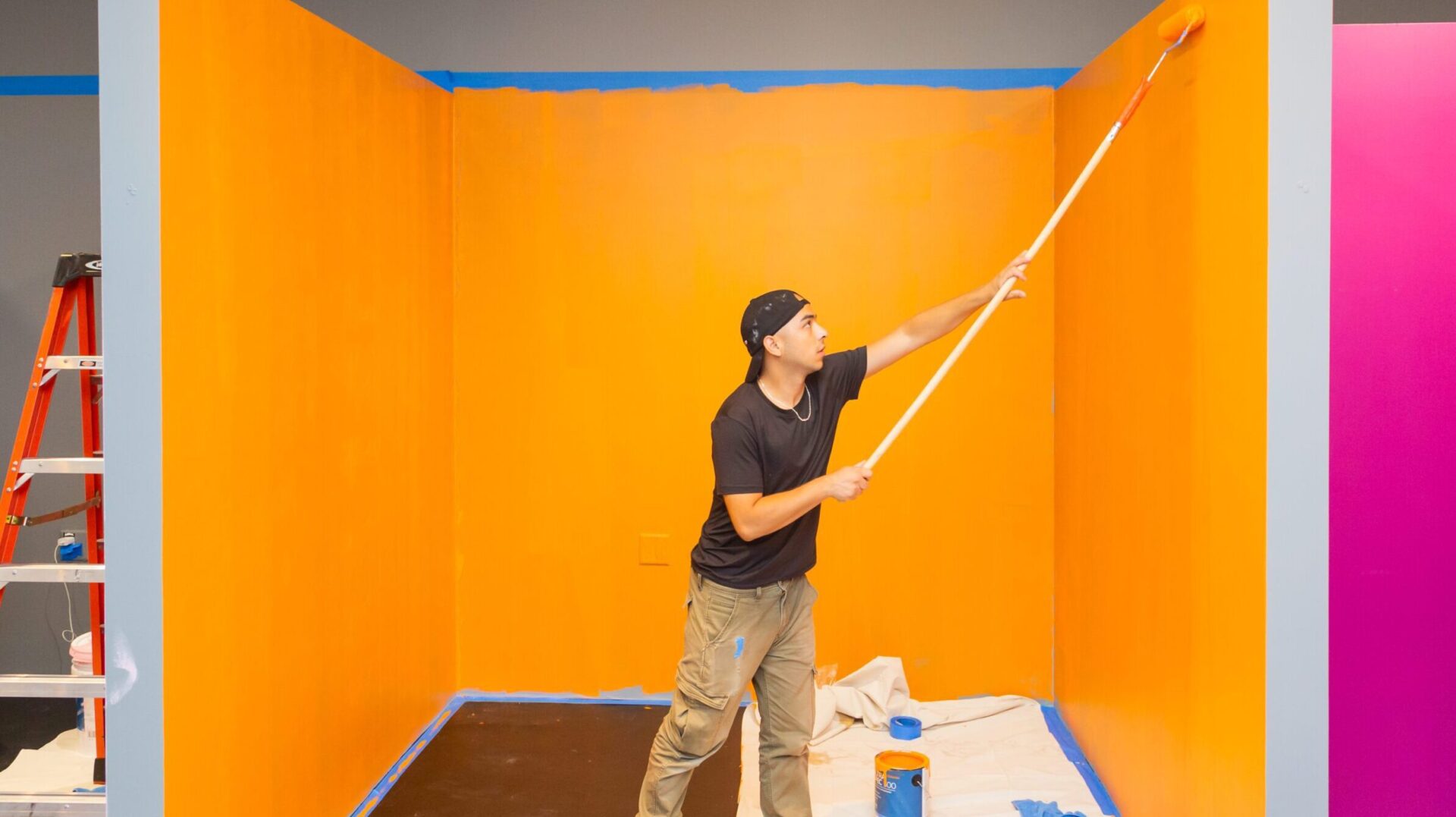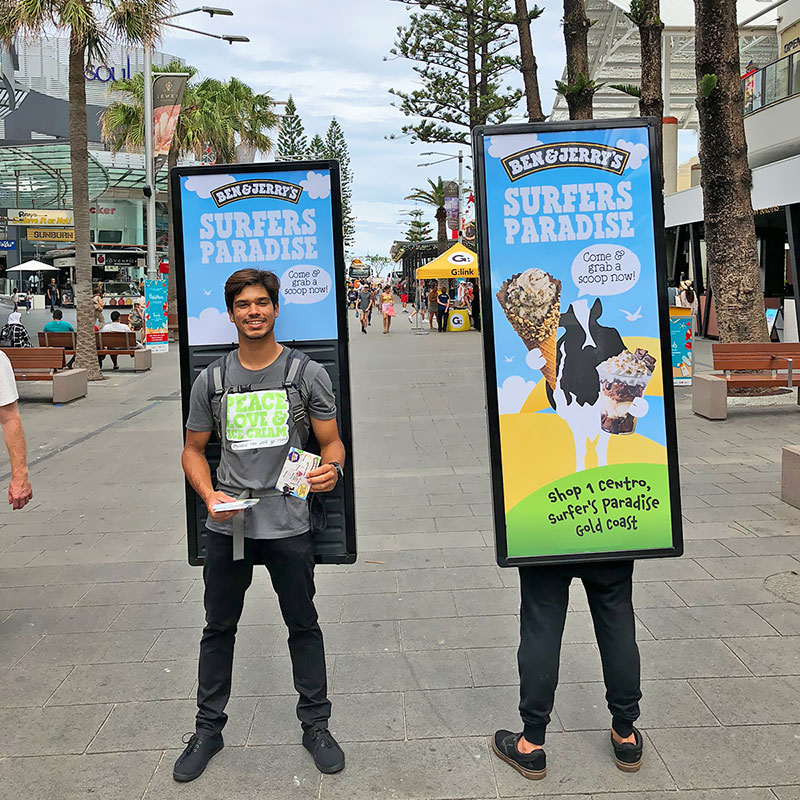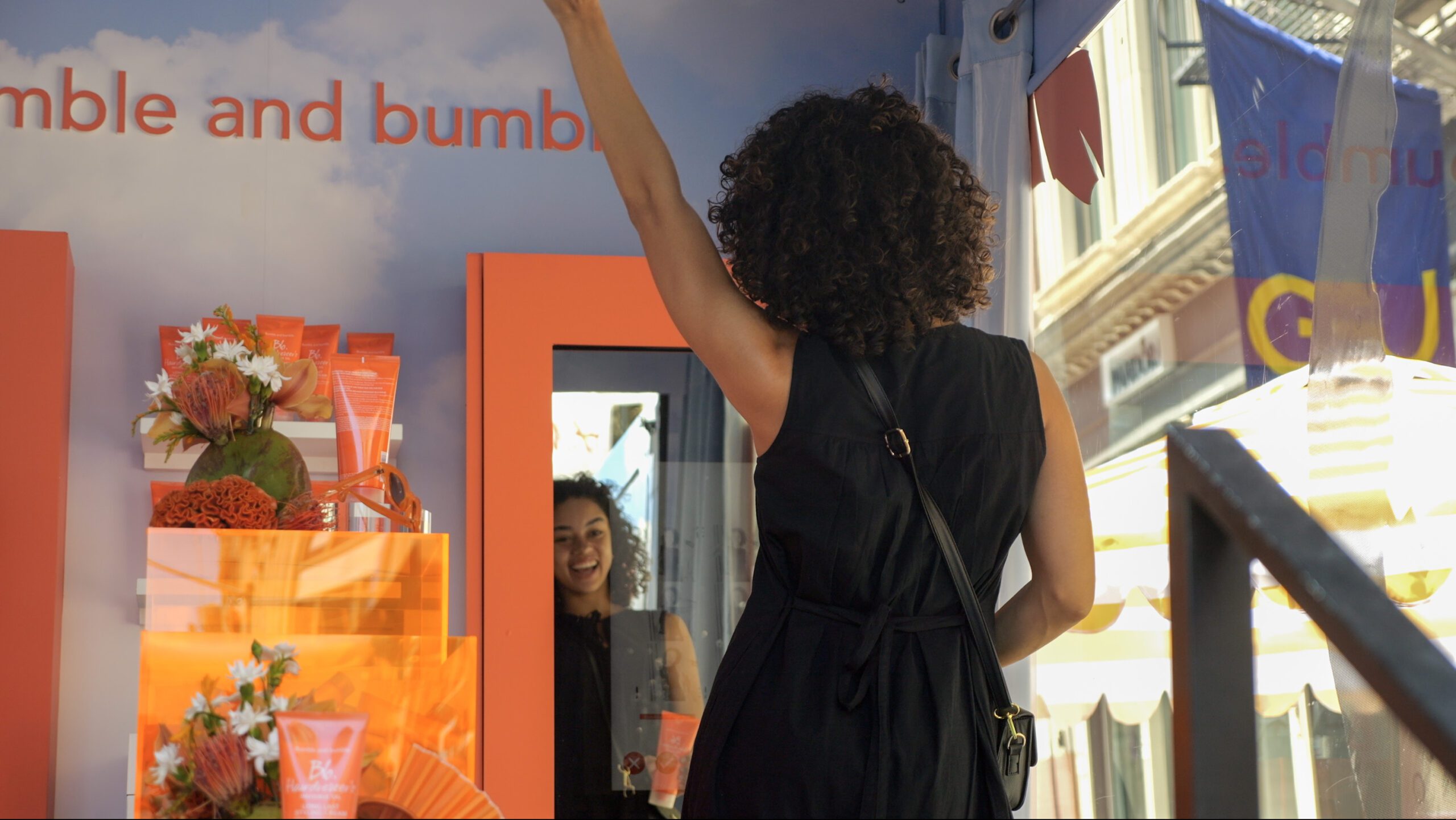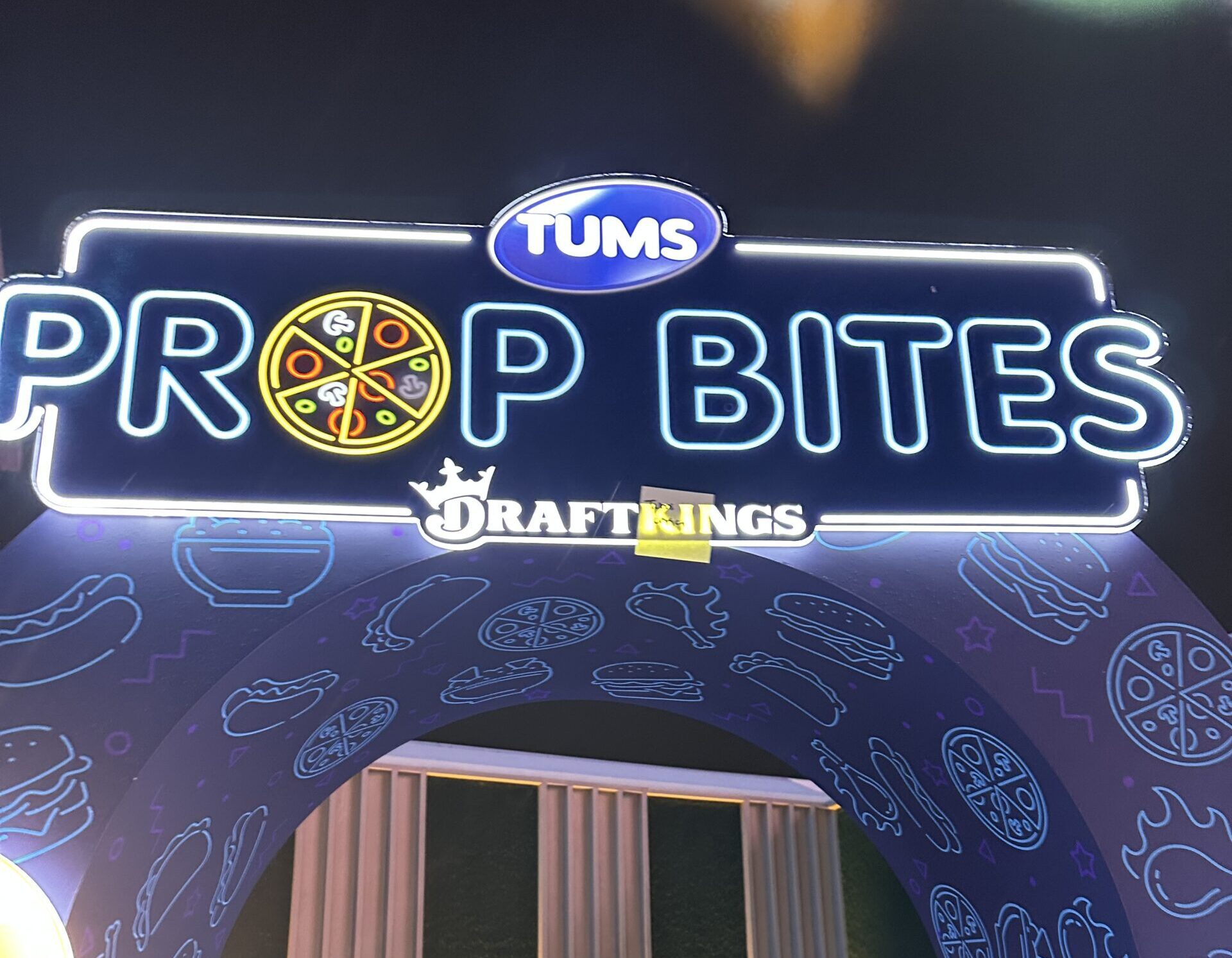
- Activations
Swag with Swagger: Engage Audiences with Style
Distributing branded apparel, drinkware, and other giveaway items — known collectively as “swag” — is a great way to boost brand awareness and connect with the target audience of your activation, pop-up, or other experiential marketing event. But we’ve all come back from conferences and expos with a carryon full of items we’ve no intention of keeping — if they make it home with us at all. How can you ensure your brand’s promotional items make the right impression on your target audience? The key to ensuring your swag gets maximum bang for the buck is careful planning and research.
Why Swag?
Swag is more than just free T-shirts and pens: It’s a marketing tool with immense power. Promotional products play a crucial role in experiential marketing campaigns by engaging the audience’s senses with tangible reminders of the experience, according to a medium.com article. “When you get a gift it’s rare that you forget who gave it to you. And remembering who gave you what gift will bring memories of the how, when, and why.”
Whether handed out at a booth, offered at an activation, or included with pop-up purchases, swag also comes with the power of positive interactions — getting something for free feels good, and that positive feeling can rub off on your brand.
Beyond on-the-spot engagement, the benefits of carefully conceived and executed promotional products are many:
Brand awareness and visibility: Imagine someone walking around with a water bottle, T-shirt, or trucker hat imprinted with your logo. Those items function as “miniature billboards, showcasing your company logo to a wide audience,” says a blog post on alphagraphics.com. Swag gets your brand name out there, increasing brand recognition among new people and cementing it in the minds of the already-aware.
Affordability and cost-effectiveness: Compared to other marketing strategies, “branded swag offers a cost-effective way to promote your brand,” says alphagrapics.com. Promotional items are affordable compared to traditional media, plus they continue to promote your brand long after the initial investment.
Conversation starter: Swag can be a great conversation starter, especially at events. A unique or eye-catching piece of swag can draw people to your booth and open the door for interaction.
When recipients wear or use branded items, others may ask them about your brand, where they got the item, etc. — especially at events like trade shows. “This not only creates a dialog but can also lead to referrals and word-of-mouth marketing,” alphagraphics.com notes.
Increased customer loyalty: Giving away swag to existing customers shows appreciation for their business and can help build loyalty and encourage repeat business.”When customers receive useful and well-purposed swag items, they feel valued, strengthening their connection to your brand,” says alphagraphics.com.
Employee engagement: Cool swag isn’t just for customers! Branded apparel or gifts for employees can boost morale, create a sense of team spirit, and make your team feel valued.
Choosing the Right Swag for Your Brand
Promotional items can be a relatively inexpensive way to reach a large audience, provided they include high-quality, relevant items that your customers will actually use. Here are some key things to consider as you identify the best swag items for your brand:
Target Audience
Who are you designing for? Understanding their demographics, interests, lifestyle, and (if you’re considering clothing items) fashion sense is crucial. “This personalized touch will make the swag more meaningful and valuable to your audience, strengthening their connection to your brand,” explains medium.com.
Make sure your swag creates an opportunity for that target audience to connect with your brand more deeply, such as by making a purchase or visiting your social media, by including your URL, social media handles, and/or a QR code wherever possible.
Design, Wearability, and Usability
Don’t just slap your logo on a shirt or water bottle. Create a design that is visually appealing, unique, and something people would want to wear, carry, or use. “Differentiate your brand and increase its perceived value by creating exclusive promotional products specifically designed for gifting at your event,” medium.com advises. Offering limited-edition or custom designs will create buzz and a sense of exclusivity that makes your audience feel special.
Make your branded items stand out without being garish — go for fashionable and functional over flashy. For example, “Don’t order 500 lime green and black crazy-striped water bottles that most people won’t like,” says a blog post on cvent.com. “Make people want to walk around with your swag.”
Engage the Senses
Using swag to delight and attract audience members need not be limited to visual and tactile giveaway items. Look for ways to involve sound, scent, and even taste to both draw a crowd and create a lasting impression. A beauty brand might offer a makeup set designed to achieve a specific look, suggests the medium.com article. A lifestyle brand might offer branded aromatherapy diffusers; a food or beverage brand might offer a sampling event that includes food-themed branded items such as cups or coasters; a fitness or wellness brand could offer attendees towels, yoga mats, or other workout-ready items.
Brand Identity and Image
Your branded promotional giveaways should be an extension of your overall brand identity. This includes your logo, colors, fonts, and messaging. Ensure a cohesive look that reflects your brand values and personality. “Consider your culture,” urges a recent LinkedIn article, to ensure your swag items match, not clash, with your brand’s overall vibe. If sustainability is part of your brand identity, consider eco-friendly materials and manufacturing processes, such as metal or bamboo drinking straws, or products made from recycled materials.
Because people will associate your brand with the quality of your swag, source swag from companies that use high-quality materials and construction methods; ask for product samples prior to purchase.
Appropriateness for the Occasion
Take cues from the venue, space, or location to help visitors connect your swag with the overall event — because for attendees, your swag will also serve as a souvenir from the experience. For example, “The crowd at a beer-tasting event is more likely to happily stick a bottle opener keychain in their pocket than get excited about a mouse pad,” suggests an article on wearesparks.com. For the Pitchfork Music Festival in Chicago, Whole Foods offered guests items like sunscreen, scented sprays, and hair ties, catering to the event’s young, concertgoing audience.
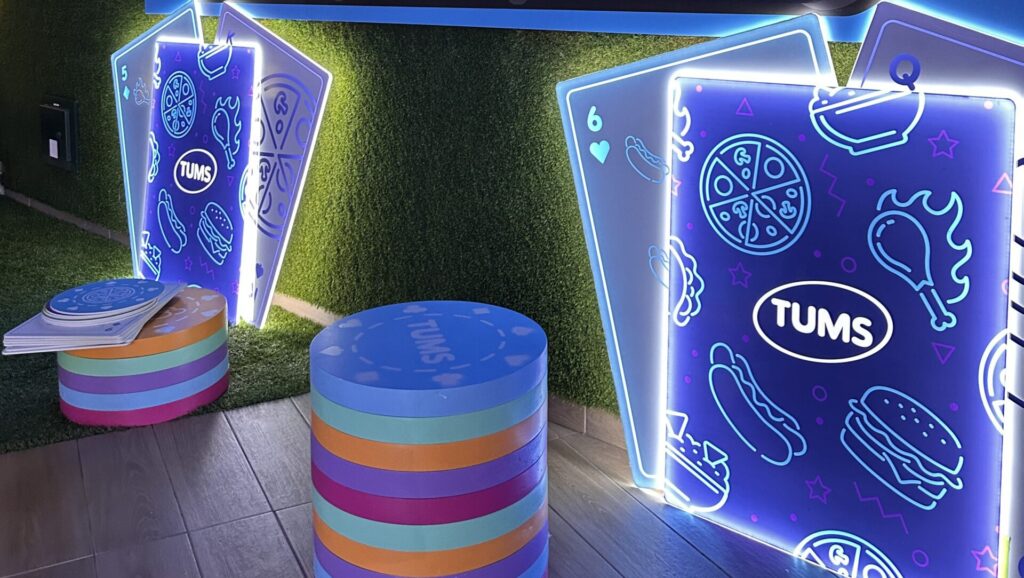

Another example: For a Superbowl-centered campaign in Las Vegas, antacid brand Tums wanted to offer swag that was playful and on-theme, without being kitschy or stereotypically “Vegas.” The result was a fun assortment of swag items geared toward different audiences including “the masses,” “casino goers” and “VIPs.” The Tums activation space — decked out in Tums’ signature blue, neon signs, branded cocktail tables, and framed jerseys reminiscent of football memorabilia — featured Tums casino chips, a food-themed roulette table, a blackjack table with Tums-branded playing cards, and brand ambassadors encouraging guests to place food-themed bets in the brand’s “Prop Bites” games.
Not every event is a Super Bowl-centered brand activation — and not every experiential marketing event allows opportunity or budget for that level of all-out swag and custom installations. But by using swag strategically, you can achieve a range of marketing goals and create a lasting connection with your target audience.
Promobile Marketing is a dynamic experiential marketing agency based in New York City. For over a decade, Promobile Marketing has collaborated with a range of brands—from budding startups to major CPG brands—on immersive marketing campaigns. Get in touch to discuss your next project.
